What Landowners in Michigan, Minnesota and Wisconsin Can Expect from the Family Forest Carbon Program
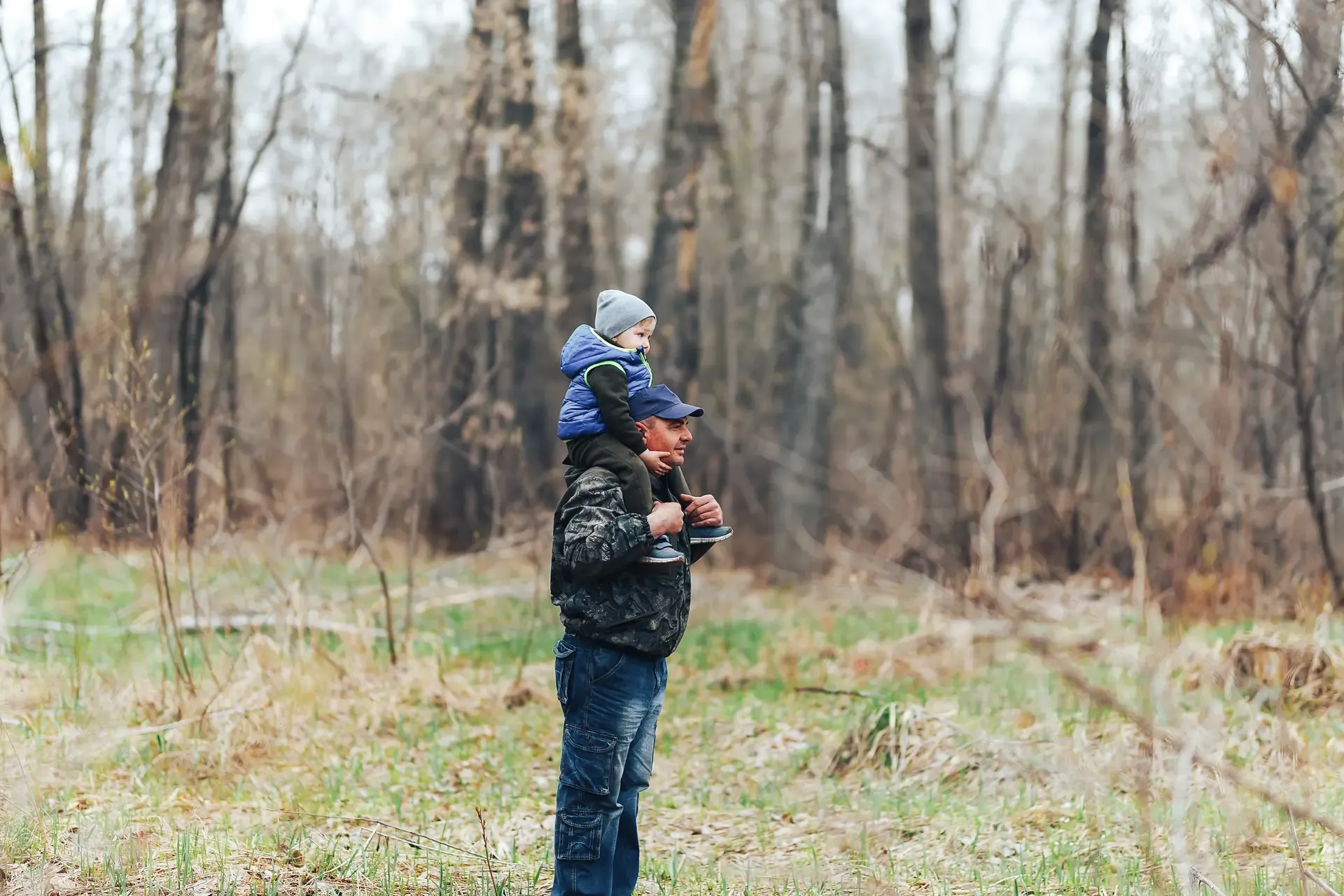
There’s a buzz in the air and it’s not the mosquitoes — yet! The Family Forest Carbon Program recently expanded to include select counties in Michigan, Minnesota and Wisconsin, and foresters and family forest owners alike are excited about this new source of income and technical support for sustainable management in the region.
To help you better understand how the program works in these states, we wanted to provide an overview of the benefits, eligibility criteria, management requirements, and payment structure for each of the two practices offered in the Midwest region.
What is the Family Forest Carbon Program?
The Family Forest Carbon Program is a customized, collaborative plan designed to work for you, your family, and your woods. It provides guaranteed annual payments during your time in the program, as well as ongoing professional and community support.
These services are free to participating landowners. In fact, we actually provide you with incentives to participate. This is made possible because the same practices that help you achieve your objectives and increase the long-term value of your woodland also increase the amount of carbon in your woods over time.
The program was created by two long-standing non-profits, the American Forest Foundation and The Nature Conservancy, and approved by Verra, a world leader in the voluntary carbon market. You can read more about the mission that drives the Family Forest Carbon Program here.
What are the benefits of enrolling?
There are many benefits to switching to long-term, carbon-friendly management!
Expert guidance from a professional forester to help you achieve your goals for your woodland (or you can continue working with your own trusted forester.)
Financial assistance to develop a forest management plan or update your existing plan to comply with the program.
Annual payments that can help you cover the cost of owning and maintaining your land throughout the 20-year contract term.
Management flexibility to harvest sustainably, including a personal firewood allowance based on your acreage.
Continued privacy and ownership of your land, without restrictions on personal recreational activities such as hunting and fishing.
The opportunity to join a community of likeminded landowners committed to caring for their forests and the planet.
A healthier, more valuable forest at the end of the contract period, to enjoy yourself or pass on to others.
INTERESTED IN LEARNING MORE ABOUT THE FAMILY FOREST CARBON PROGRAM? CLICK HERE TO CHECK YOUR ELIGIBILITY TODAY.
Who is eligible?
Landowners must own at least 30 acres of forested land in one of the counties listed below to qualify for either of the two FFCP forest management practices available in the region: Growing Mature Forests and Promoting Diverse Forests.
The practice you qualify for is largely based on the type of tree species in your forest, as well as your goals for your woodland. More details on which forest conditions are likely to qualify are listed below, or you can visit our website to check your eligibility using our secure mapping tool.
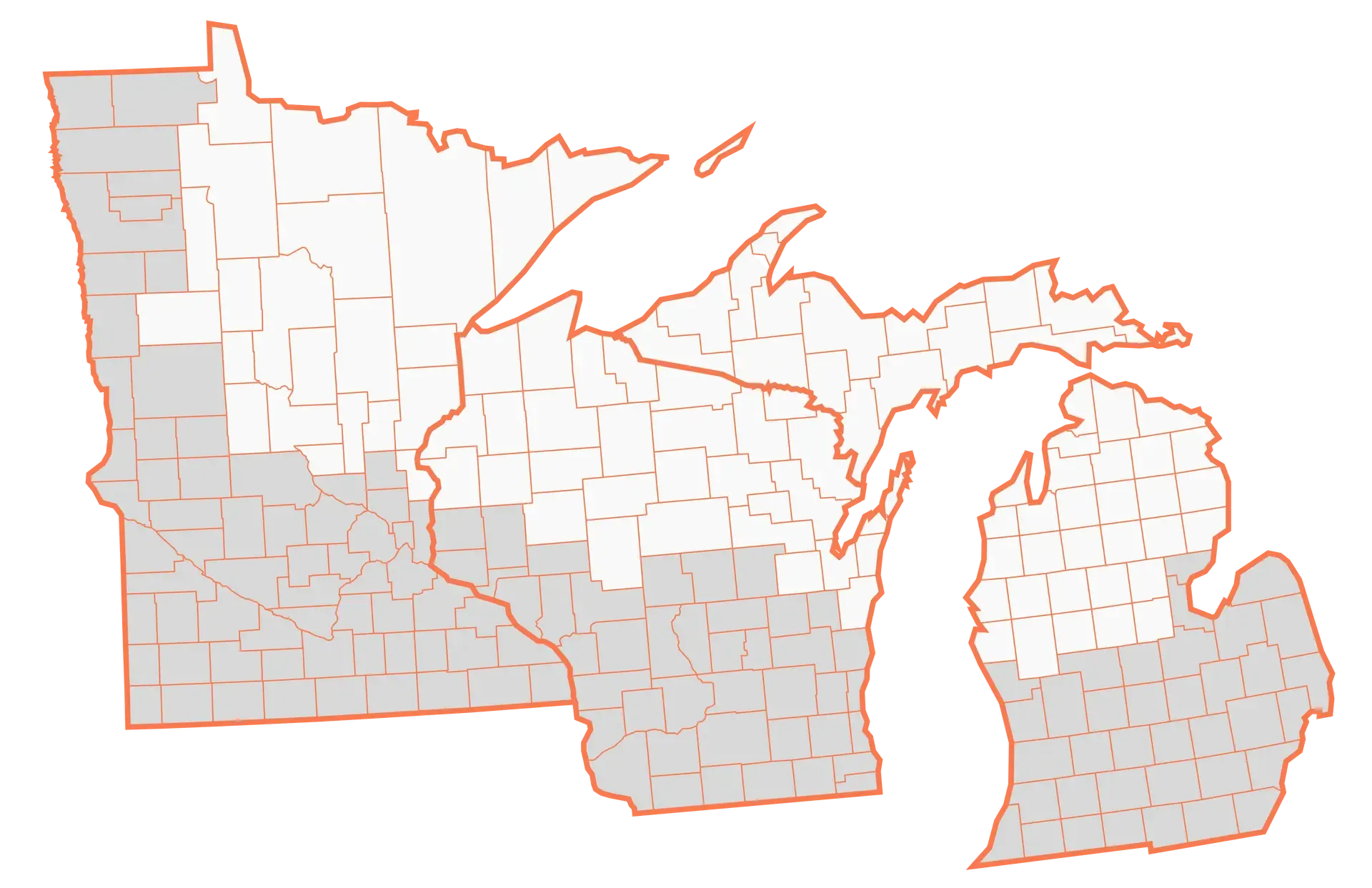
Counties currently eligible for thee Family Forest Carbon Program in Michigan, Minnesota and Wisconsin.
Growing Mature Forests This practice is designed to allow your forest to grow older and larger trees than in average forests in your area. It promotes long-term forest health, improves habitat for the numerous wildlife species that rely on mature forests, and increases the commercial and environmental value of the woodland while allowing you to maintain a working forest.
Landowners interested in Growing Mature Forests must:
Own at least 30 acres of naturally occurring (i.e., non-plantation) forest land
Have northern hardwoods such as Maple, Beech and Birch species making up at least 50% of the basal area, and a minimum stocking of 100 sq.ft/acre.
Have the legal right to harvest
Be willing to submit a form confirming compliance with the program requirements once every five years
Promoting Diverse Forests
This practice is designed to improve forest carbon storage by increasing the number of living trees left uncut during coppice or clearcut harvests. It allows you to balance the financial and ecological benefits of harvesting, while enhancing wildlife habitat, biodiversity, and resiliency in the face of a changing climate.
Landowners interested in Promoting Diverse Forests must:
Own at least 30 acres of naturally occurring (i.e., non-plantation) forest land
Have Aspen and Birch species making up at least 60% of the basal area, and a minimum stocking of 10 cords/acre
Have the legal right to harvest
Be willing to submit a form confirming compliance with the program requirements once every five years
“There are many more benefits to participating than just the financials... FFCP practices create additional tree canopies to help tree seedlings thrive where precipitation patterns are uncertain and temperatures soar. They improve wildlife habitat by leaving larger patches of intact forest, while still creating habitat for species like the ruffed grouse and woodcock that thrive in younger forests. With older forests and younger forests co-existing on your property, you have the potential to create a beautiful and diverse dichotomy on your land.” — Chrissy Shaw, FFCP Senior Forestry Manager
What can (and can’t) you do while enrolled?
We’ve outlined the basic requirements for each practice below. Please note that the removal of invasive species using methods that do not significantly impact stand health or structure is encouraged under both practices. Landowners are also permitted to collect firewood (based on enrolled acreage) for personal use each year.
Growing Mature Forests
Harvesting is permitted in the Growing Mature Forests practice, provided that:
Stands undergoing a harvest contain at least 130 sq. ft/acre
The harvest does not remove more than 25% of the basal area at the time of the harvest
The harvest does not reduce the average stand diameter by more than 10%
Promoting Diverse Forests
One commercial timber harvest may occur during the 20-year enrollment period under the following conditions:
For any harvest during the enrollment period, no more than 60% of the volume can be removed. The remaining 40% must be left uncut in a combination of clumps, islands/patches, or fingers
Unharvested “reserve” areas must be a minimum of 1 acre in size, where no living or dead biomass can be removed
Areas that are left uncut to meet standard Best Management Practices cannot make up more than 50% of the required reserved area
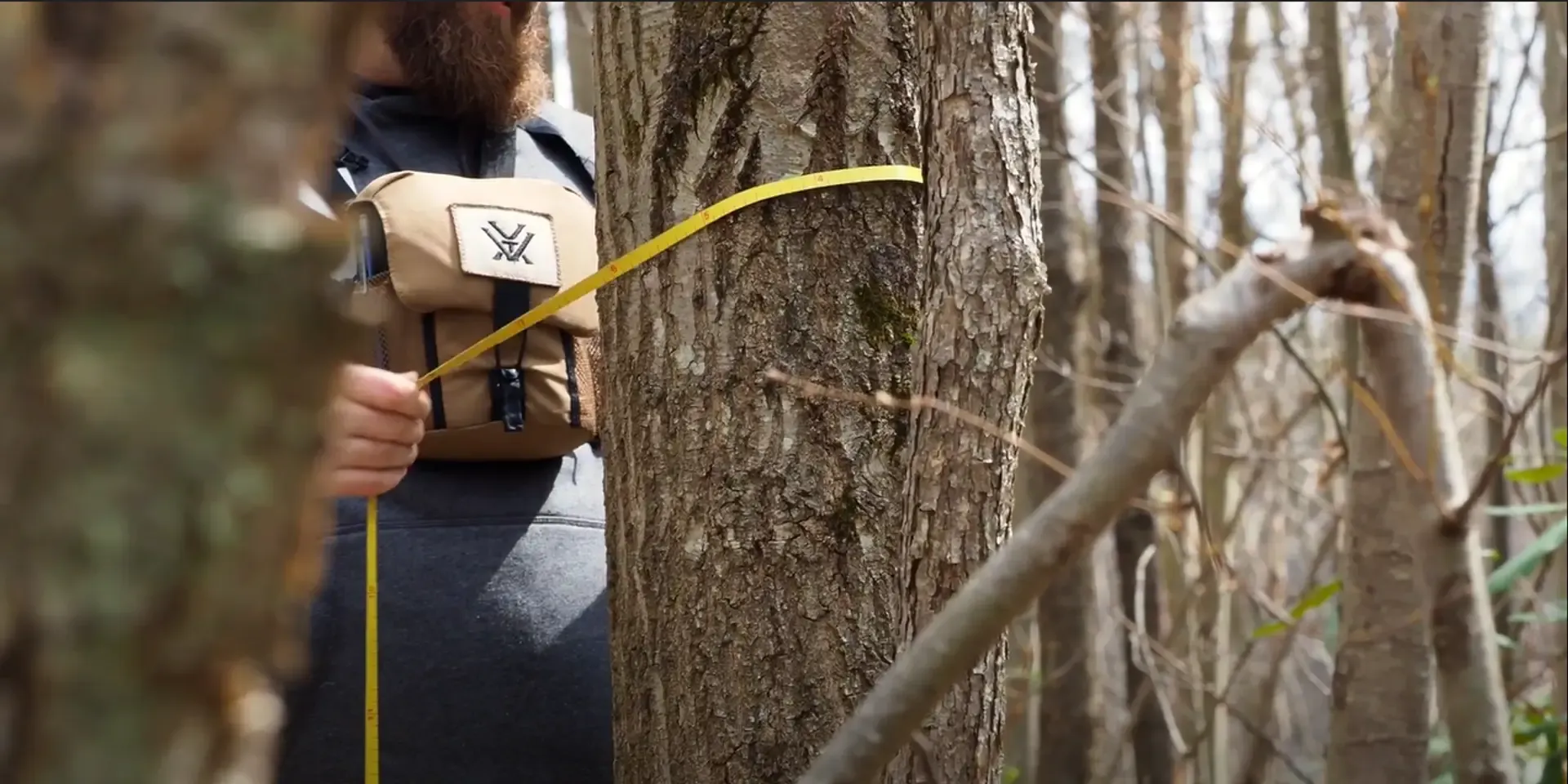
FFCP Outreach Forester Garrett Hamilton taking measurements on a field visit.
“I want to thank you and everyone in your organization who gave us guidance and support in making the decision to enroll our property in the carbon program. The patience and professionalism that your representatives demonstrated through the important process leading to our decision is to be commended." — Carl, representative of Bear Run Hunting & Fishing Club
What happens after I check my eligibility on the website?
If you use our secure mapping tool to check your eligibility for the program, you’ll immediately get a report indicating which, if any, of the FFCP practices you are likely to qualify for. Of course, satellite data and technology can only get us so far, which is why we collect your contact information in order for a member of our team to follow up and confirm your eligibility.
There is no obligation to pursue enrollment in FFCP, and if you decide to discuss your eligibility with a member of our team, they will ask you some more questions about your land and your long-term goals for your forest. A member of our forestry support team will then look at your woodland to ensure there is the potential for increased carbon storage, and if you’re interested in enrolling your account manager will guide you through the rest of the enrollment process.
You’ll receive your first payment within 60 days of sending us your payment information, and begin reaping the additional benefits of joining our supportive, like-minded community!
The Family Forest Carbon Program is now enrolling landowners with 30 acres or more in Pennsylvania, West Virginia and Vermont, as well as select counties in Maryland, Massachusetts, Michigan, Minnesota, New York and Wisconsin. Click here to check your eligibility today.
Related Articles
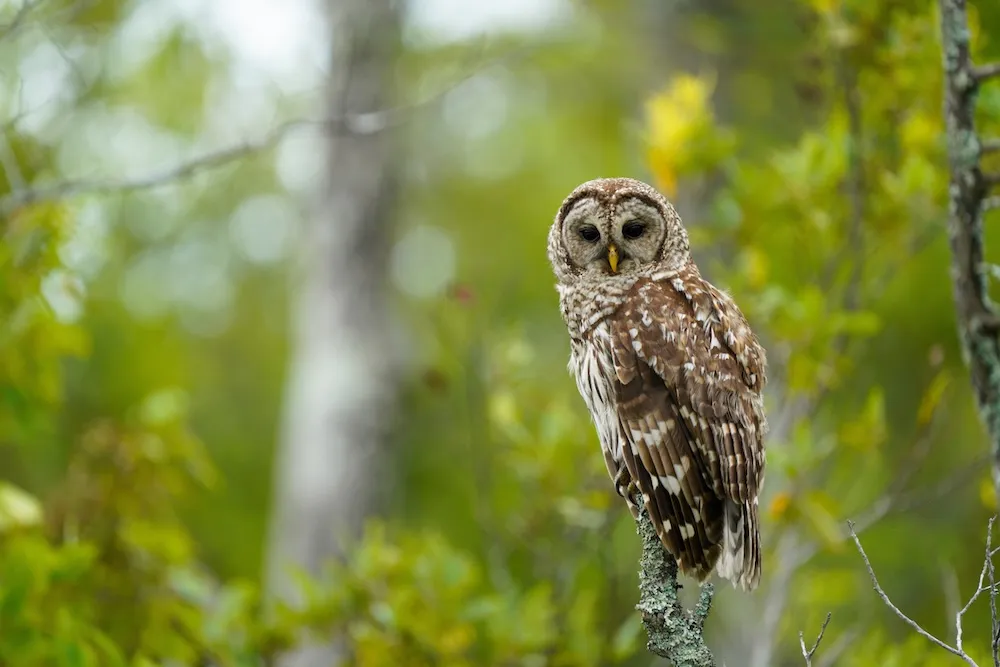
December 18, 2025
Improving Wildlife Habitat with the Family Forest Carbon Program
For many landowners, spotting a fox, songbird, or other wildlife on their property is one of the highlights of spending time on their land. In this post we look at some examples of management practices you may see in your FFCP forest management plan and how they help create the ideal conditions for certain wildlife species.
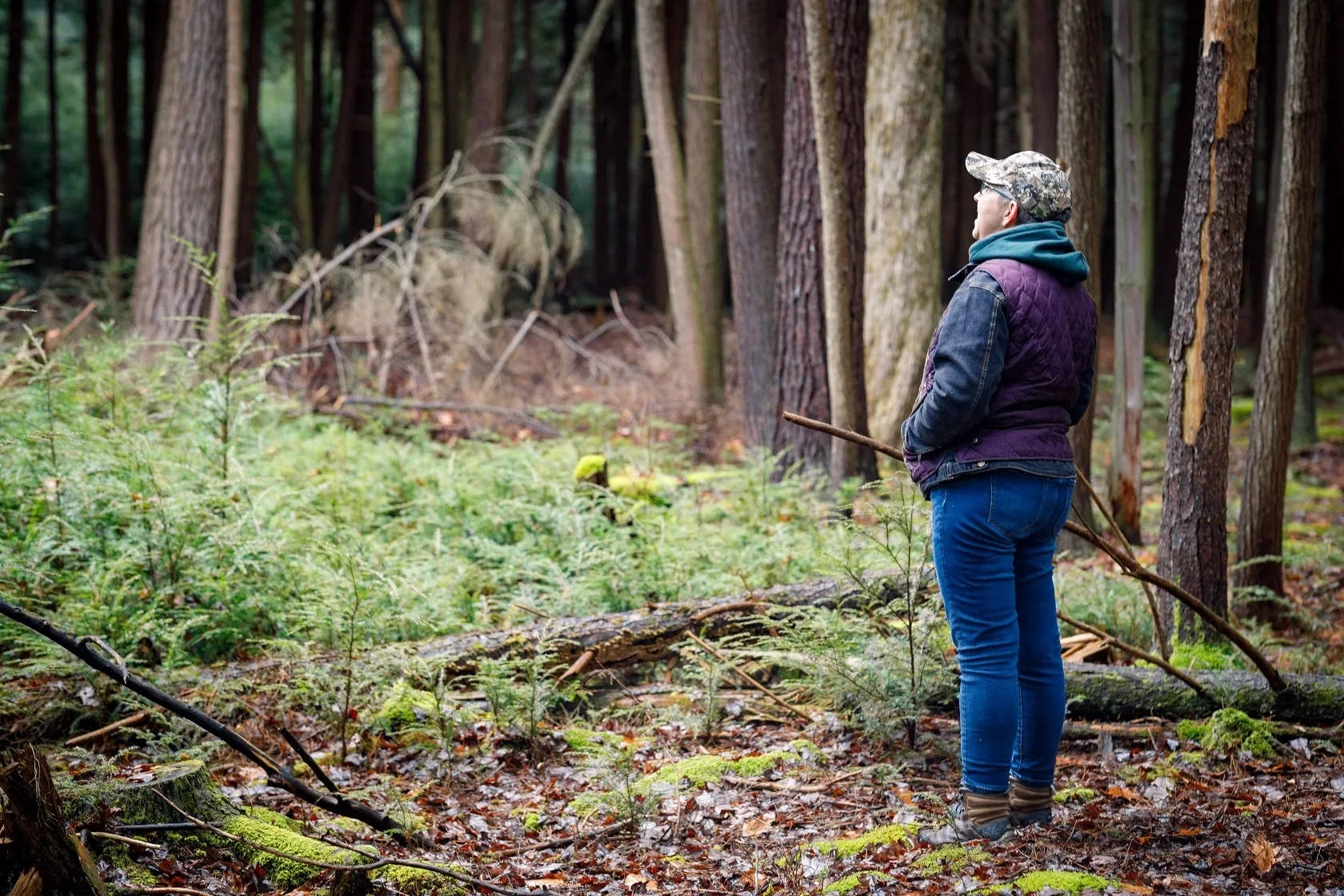
December 16, 2025
Family Forest Carbon Program's First Ever Credits Delivered to REI Co-op
Today, REI becomes the first buyer to receive carbon credits from the Family Forest Carbon Program (FFCP), a high-integrity forest carbon project designed for small-acreage landowners.
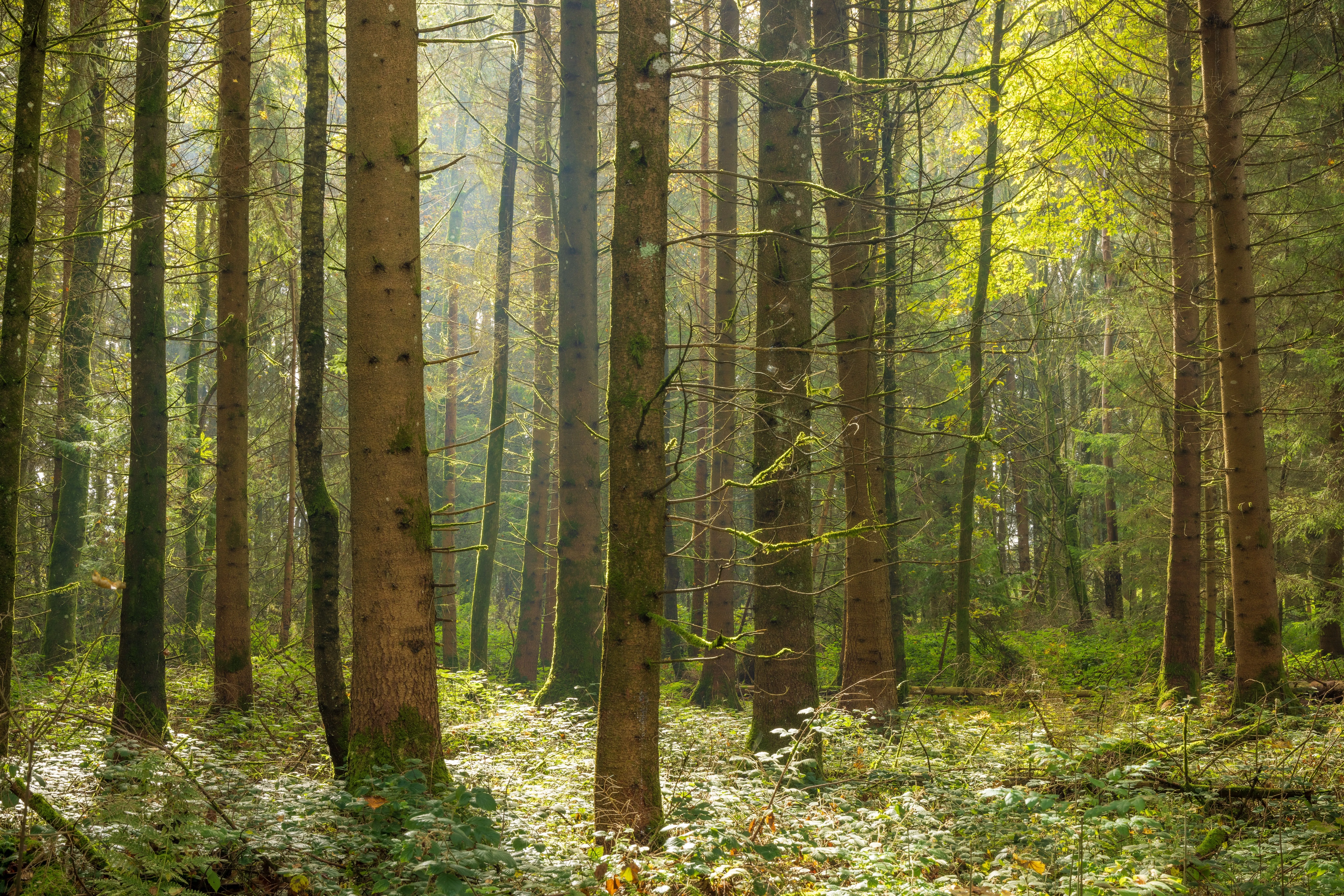
December 4, 2025
Forest Carbon Project Issued First Ever Credits
Conservation organizations the American Forest Foundation (AFF) and The Nature Conservancy (TNC) announced today the issuance of improved forest management (IFM) carbon credits to the Family Forest Carbon Program (FFCP) from standards setter Verra under its Verified Carbon Standard (VCS) Program. This marks the first issuance of credits produced using Verra’s VM0045 improved forest management (IFM) methodology, which was co-developed by Verra, AFF, TNC, and TerraCarbon.